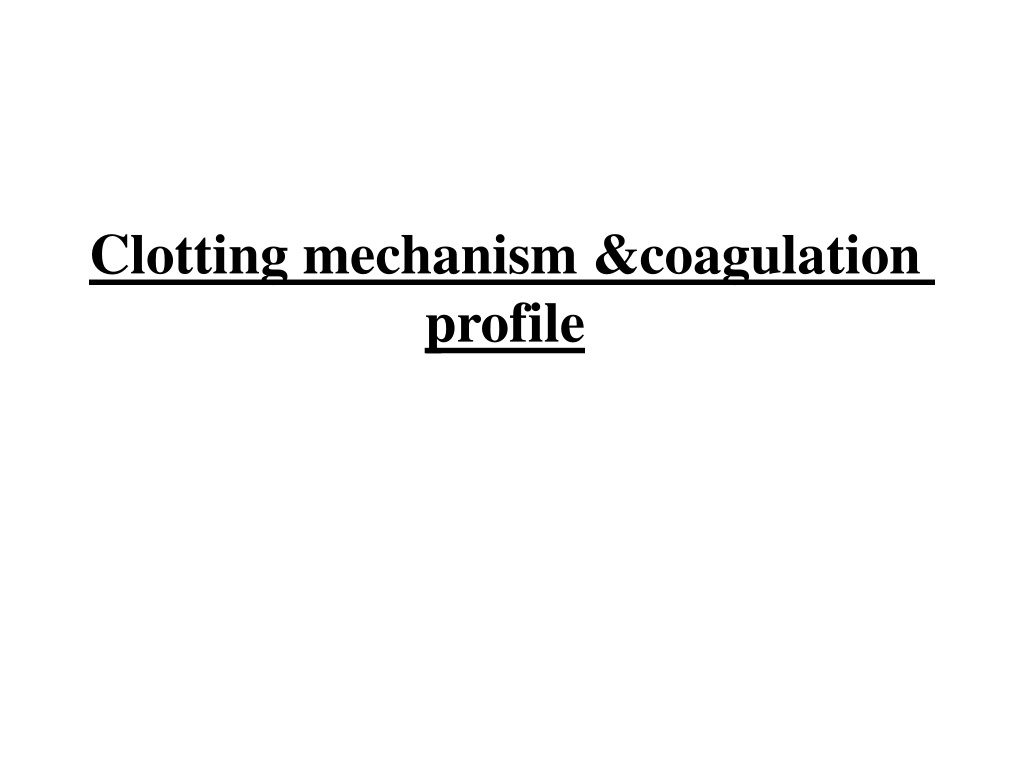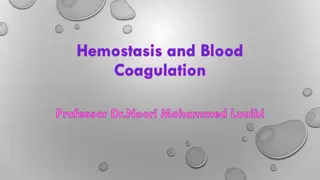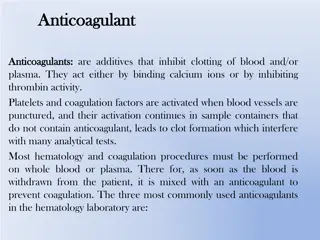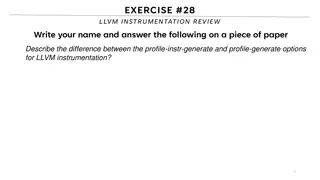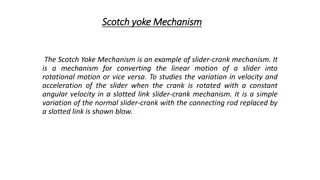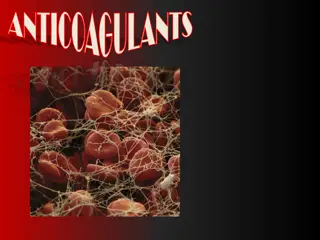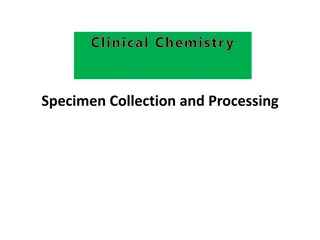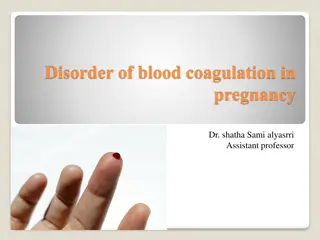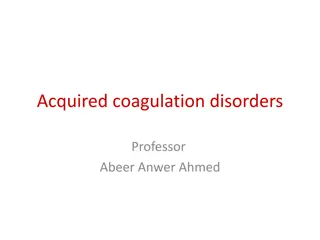Clotting mechanism &coagulation profile
Platelets, essential for hemostasis, form clots to prevent bleeding. Abnormal platelet levels can lead to thrombocytopenia or thrombocytosis, impacting blood clotting. Learn about hemostasis and the role of platelets in maintaining vascular integrity.
Download Presentation

Please find below an Image/Link to download the presentation.
The content on the website is provided AS IS for your information and personal use only. It may not be sold, licensed, or shared on other websites without obtaining consent from the author.If you encounter any issues during the download, it is possible that the publisher has removed the file from their server.
You are allowed to download the files provided on this website for personal or commercial use, subject to the condition that they are used lawfully. All files are the property of their respective owners.
The content on the website is provided AS IS for your information and personal use only. It may not be sold, licensed, or shared on other websites without obtaining consent from the author.
E N D
Presentation Transcript
Clotting mechanism &coagulation profile
Platelets (Thrombocytes) Are small, irregularly-shaped,oval non- neocleated cells, 2-3 m in diameter, derived from fragmentation of precursor megakaryocytes (bone marrow) The average lifespan of a platelet is between 8 and 12 days. Old platelets are destroyed by phagocytosis in the spleen and by Kupffer cells in the liver.
Functions maintenance of vascular integrity Helping to arrest bleeding by formation of platelets plugs It play role in synthesization of the major component of factor 8(VIII).Fibrine stabilizing factor
An abnormality or disease of the platelets manifested by 1-Thrombocytopenia It occur when the number of platelets is too low, thus excessive bleeding can occur(hypo- coagulation) as in A-bone marrow abnormality &cancers B-DIC,septicemia,viremia endotoxemia
2-Thrombocytosis It occur when the number of platelets is too high, blood clots can form (thrombosis), which may obstruct blood vessels (hyper coagulation) as in A- Iron-deficiency anemia B- Hemolytic anemia
Hemostasis It is the process of blood clotting and then the dissolution of the clot.it consist of Intrinsic , Extrinsic & Fibrinolysis system, and by which prothrombin will change to thrombin and fibrinogen to fibrin
Normal hemostasis 1-Vascular phase : vascular constriction (which limit the flow of blood to the area of injury). 2-platletes phase: it consist of Platelet activation , platelet aggregation and platelet adhesion
3- to insure stability of platelet plug ,fibrin clot (fibrin mesh) will forms & entraps the plug If the plug contain only platelets it call ( white thrombus) & if it contain RBCs it call (Red thrombus 4-finally the clot must be dissolved through the action of plasmin (Plasmin is an important enzyme present in blood that degrades many blood plasma proteins, such as, fibrin clots. The degradation of fibrin is termed fibrinolysis.
